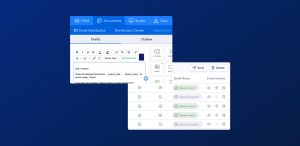As night falls on the Bhosphorus Bridge in Istanbul, plans are afoot for a new bridge to strengthen the links between Europe and Asia.
Meanwhile, AIFMD threatens to sever the links between US funds and their EU investors. For those who want to continue marketing to EU investors, using technology to cut the cost of BAU activities such as client reporting will be essential to avoid the margin compression that has followed in the wake of most regulatory change.
A few years ago, when UCITS was all the rage, there was a palpable sense of giddy excitement within the hedge fund community here in the US.
Whilst lacking a catchy name, the Undertaking for Collective Investment in Transferable Securities EU directive (UCITS) hung heavy at every conference you went to.
Fund managers were eager to gain easier access to a broader source of funding from within the European community, particularly after the post-2008 redemption cycle, which hit so many coffers so squarely.
Once they peeled back the covers and looked at the legislation beneath, however, many found the legal intricacies of it nothing short of downright frightening.
The demands heading their way were onerous; some called the penalties for non-compliance severe—extending as far as jail time in the most extreme interpretations of the most innocuous corners of the law. Even failure to provide regular pricing could land you in hot water for something once considered nothing more than a mere client service faux pas.
Bigger fund managers were well able to shoulder the burden of compliance, but for the majority of the funds in the US, the risk was deemed to outweigh the reward. We’ll stick with our offshore funds, thank you very much, said most of them.
Fast forward to 2012, to the eve of AIFMD and another EU directive of dubious name is threatening to make US fund managers giddy.
AIFMD: All of the pain of UCITS, with none of the choice
Sadly, the Alternative Investment Fund Managers Directive (AIFMD) is making US fund managers dizzy with bewilderment rather than excitement. This time, for many funds, the European Union is entirely removing the option of being regulated by the EU.
The message from Europe is clear: if you manage money for any investor in our territory you will comply will our laws, no matter whether they’re an individual, a pension fund, or a family office.
The target this time is any hedge fund of reasonable size and its scope will cover most US-based funds, if not immediately then certainly by 2018 when it expected that private placement regimes (PPRs) will be definitively ended.
The particulars of the catchment are left for others to discuss, but suffice to say, any fund with an offshore vehicle over 100mm, or over 500mm if they are running an unleveled strategy, will be subject to the new law.
That’s a lot of managers.
And so you see, AIFMD is all the pain of UCITS but with none of the choice.
Compliance will be a costly and complex exercise for US funds
Non-EU managers marketing to EU investors will have to meet all of the requirements of the AIFMD which, according to Ernst & Young, is likely to be a “costly and complex exercise.”
The following E&Y diagram outlines the main areas covered by the AIFMD and provides a taste of what’s to come:

So why are the EU creating hard work for US fund managers? Well, according to Ernst & Young, the AIFMD is “expected to establish an internationally recognized quality “AIF brand” for AIFMD compliant products, like the “UCITS” brand for traditional funds.”
US fund managers must “up” their operational game
Managers who want to keep their offshore business going will have to “up” their operational game, particularly in areas of their enterprise where to date a just-good-enough approach has sufficed.
Client service is perhaps the best example of an oft-overlooked area of the fund business that may now turn out to be an Achilles’ heel. Behind the scenes of most funds, it’s manpower that usually acts as the glue that keeps client reporting hanging together.
Time to exchange manpower for automation via technology
That’s a risky strategy when the organization is pinned on the numbers being right and is crying out for a more robust solution.
No doubt in the short term there will be a plethora of outsourcing groups queuing up to help shoulder the burden but, in the long term, funds need to start thinking of automation through technology.
Will AIFMD kill the goose that laid the golden egg?
Whether funds will choose to comply with the new directive or simply shutter their overseas operations remains to be seen. One wonders whether in fact the EU risks killing the goose that laid the golden egg, forcing US funds out of Europe altogether.
With the hunt for 7.5% returns all too prevalent in the pension world, a mass exodus of managers from the European market might well be damaging for the long term fortunes of investors.
In truth, there will be many people in Europe – and a fair few US fund managers – hoping to find a neat solution that brings AIFMD compliance without the margin compression that has so often followed in the wake of past regulatory change.
A quality mark is great for investor confidence provided that it is still economical to service those investors. The answer to that million-dollar question very likely hangs on the industry’s ability to rapidly embrace technology that can inject new efficiency into BAU activities such as client reporting and fund marketing. Unless technological innovation can give cost-conscious US funds a shot in the arm, we might just see their European business flatlining.



